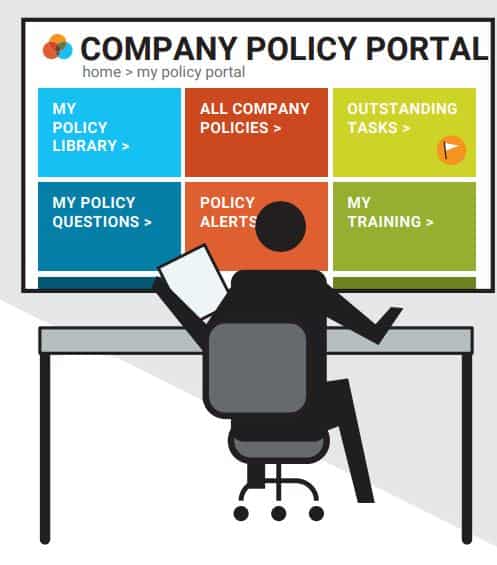Company policies are crucial in the workplace as they help reinforce and clarify the standards that are expected of employees. In effect, they are the written laws that define what is acceptable and unacceptable within your organisation.
Whether it’s a social media policy, password policy, or privacy policy, your employees need clear guidance on what is expected of them in certain situations. If these policies are not communicated properly, it could expose your organisation to data breaches, financial sanctions, legal action, not to mention the resulting reputational damage.
Company policies establish a legal duty of care, yet many organisations approach policy management haphazardly. Policies are often managed across multiple spreadsheets and filesharing systems, lack consistency, are out of date, and generally do not support regulatory compliance.
The key to protecting your organisation from compliance and information security problems is implementing an effective policy management system that provides a framework of governance, identifies risk and defines compliance.
What’s the Best Way to Manage Company Policies?
In today’s complex business environment, organisations need to be able to respond rapidly to any changes and adapt policies where necessary. Unfortunately, the old system of using manual processes to manage company policies no longer cuts it and potentially exposes organisations to significant risk.
Organisations need to be efficient, effective, and agile to be able to respond to these environmental changes quickly, and the best way to do this is by using a centralised policy management system.
A policy management system will provide organisations with an easy to use, centralised solution for creating, storing, and distributing important policy documents. It will have a consistent method of creating policies, add structure to company procedures, and ultimately make it easier to track staff attestation.
The biggest problem organisations face with information security and compliance is user participation. However, a centralised policy portal will ensure that employees are only presented with targeted compliance content that is relevant to their role.
Organisations can effectively measure continuing improvements in awareness and highlight areas that require attention before they pose a risk to security and compliance.
Benefits of a Centralised Policy Management System

- Automates Policy Lifecycle – Policy automation helps streamline processes and provides a single source of truth for all compliance-related activities. Company policies can be completed on time and in a way that can be controlled and measured, reducing the impact of human error. The automation of policy management will ensure that compliance is up to date and that your organisation is protected from risks and litigation.
- Manage Risk – Policy management begins with the identification of risks and managing suitable controls to deliver risk mitigation. One of the problems that can arise with this process is the effective communication of policies and procedures to employees. A centralised system will ensure that all users in a target group must agree to a policy or complete tests by a specified date and time.
- Effective Reporting for Auditors and Regulators – A centralised policy management system addresses the key problem of demonstrating compliance with legislative requirements and providing due care to third party auditors and regulators. It provides clear audit trails that record who interacted with company policies and helps identify the areas that present the highest risk to data security.
- Target Multiple Users – A centralised system enables management to target or exclude specific groups of users. Policies may differ across an organisation, so specific company policies may be needed for individual departments. This kind of targeting ensures that the right policy is going to the right people, at the right time.
- Drive User Participation and Awareness – It’s important that organisations achieve and demonstrate 100% compliance and user awareness with key policies. Managing compliance is always more effective when users are involved as it gives them a greater understanding of the significance of their actions with regards to information handling.
Discover MetaCompliance Policy Management Software
Simplify your policy management with MetaCompliance’s automated software. Easily create, distribute, and track company policies while ensuring employee sign-offs and compliance, all in one secure and organized system that meets regulatory requirements.







